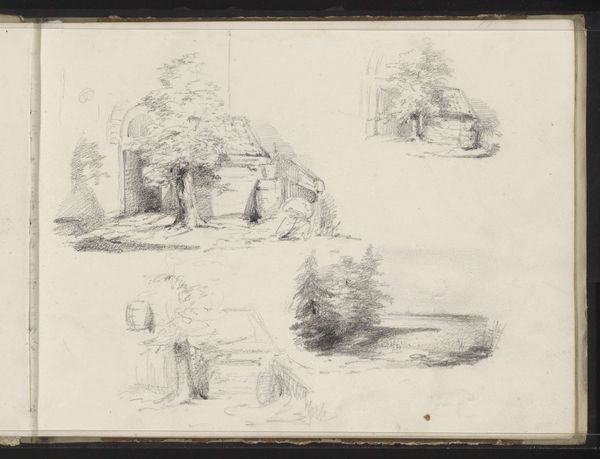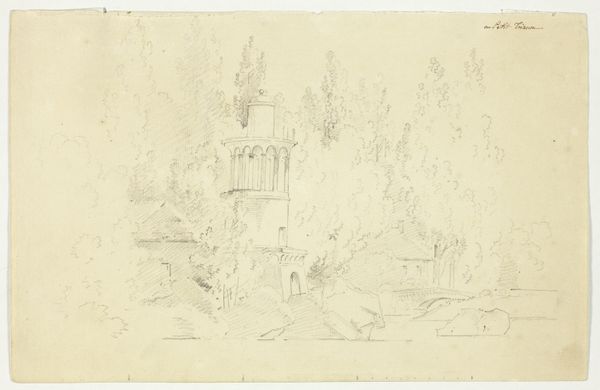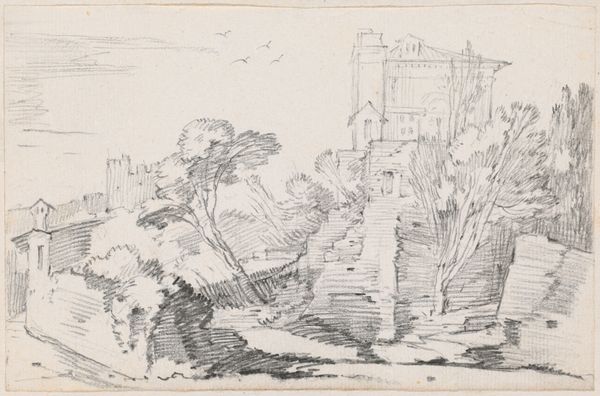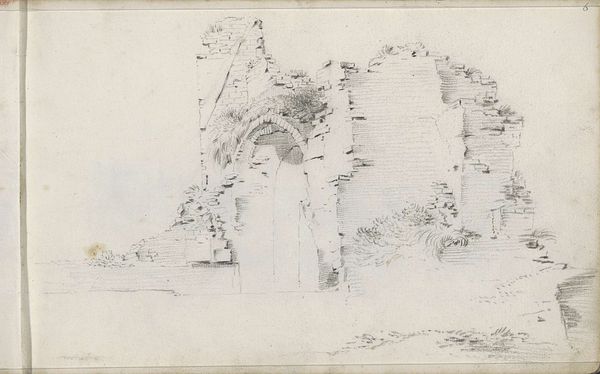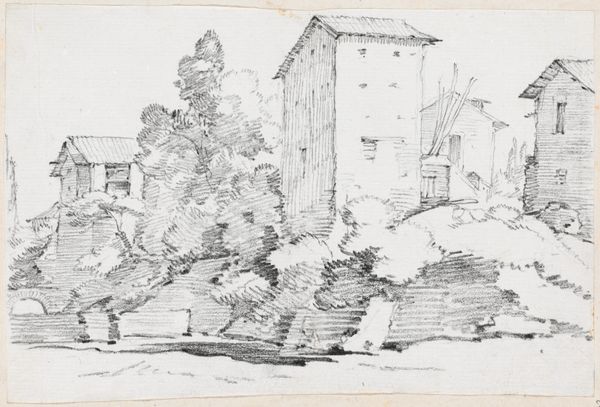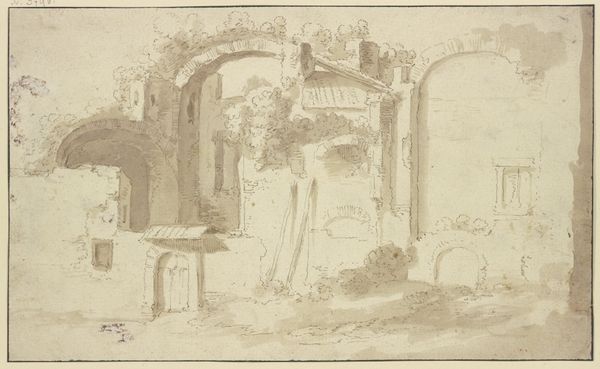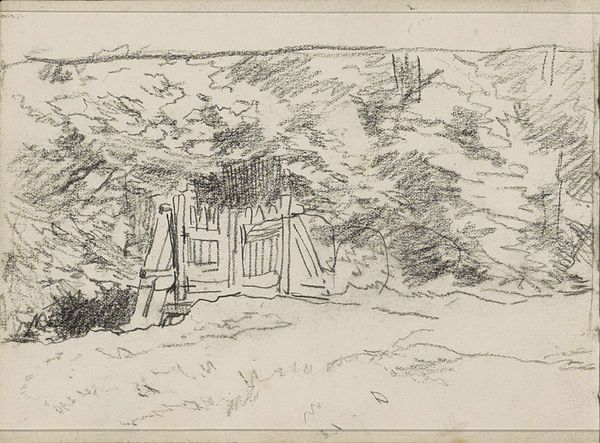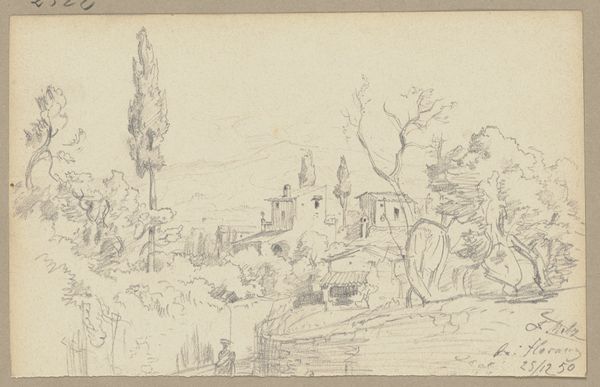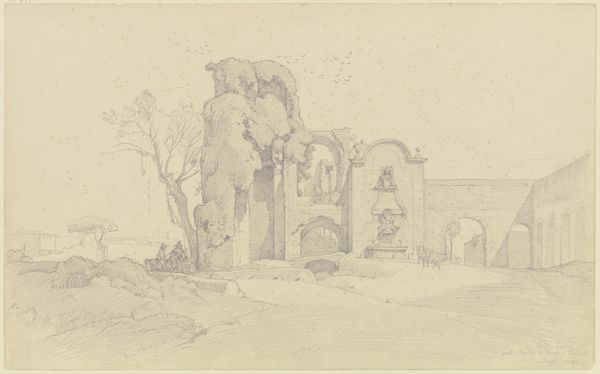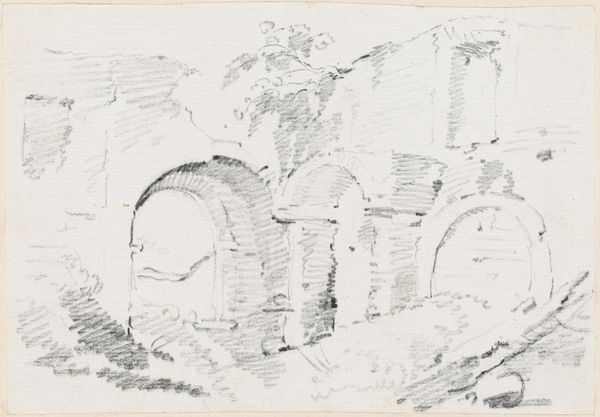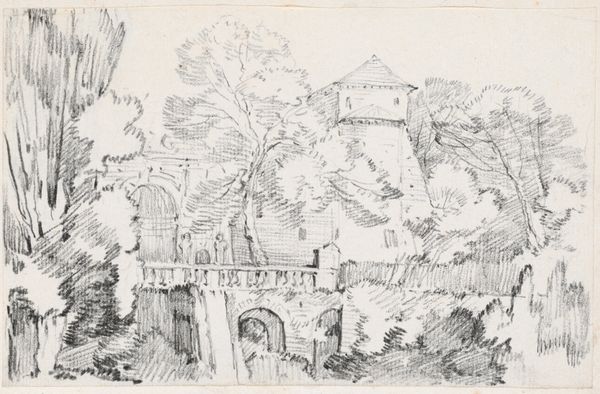
drawing, pencil
#
drawing
#
pen sketch
#
landscape
#
pencil
#
cityscape
#
realism
Dimensions: sheet: 11.5 x 18 cm (4 1/2 x 7 1/16 in.) page size: 42.5 x 27.7 cm (16 3/4 x 10 7/8 in.)
Copyright: National Gallery of Art: CC0 1.0
Curator: Here we have Joseph Marie Vien's "Roman Ruins with a Stand of Cypresses," a drawing likely rendered between 1744 and 1750, sketched in pencil and pen. It portrays a crumbling classical structure amidst a natural setting. What are your initial thoughts on viewing this work? Editor: Immediately, a sense of serene melancholy washes over me. The ruined architecture, juxtaposed with the vibrant cypress trees, speaks to the passage of time, the impermanence of human achievement against the backdrop of enduring nature. Curator: Vien created this landscape during a politically charged era. The Enlightenment was taking root, encouraging new perspectives on traditional authority, while the arts served as a vital tool for conveying national pride. Note how meticulously he delineates the forms; it emphasizes the visual language employed to evoke themes of glory and antiquity, both heavily exploited for nationalist agendas. Editor: Yes, I can certainly appreciate that. These landscapes, with their focus on architectural remnants, not only displayed artistic prowess but also carried complex symbolic weight. The broken walls can stand as potent reminders of political and social transformations, serving as prompts to reflect on current power dynamics. How are we choosing to build our ruins? What narrative are we leaving behind? Curator: I think Vien masterfully illustrates a narrative by connecting the past and the present. It reminds us that cultural identities are not static but evolve over time and must be studied carefully. The ruins are not just relics, but evidence that cultural touchstones of society shift constantly under different regimes. Editor: Absolutely. It is this very aspect, the fusion of history, culture, and philosophy in art, that continues to ignite thought-provoking discussions and inspires actions far beyond the aesthetic appreciation of it. I see here the beginnings of cultural discourse, reminding us how art both reflects and influences socio-political narratives, demanding us to continually reflect on their intertwined trajectory. Curator: I'd agree that examining artwork like this one helps us reflect on society. What do we build and preserve? What do we allow to decay? Vien, it seems, was quite interested in this, using Roman ruins as a mirror for France. Editor: Indeed. Vien invites us to contemplate the future by understanding our past, and this simple pencil sketch is a beautiful catalyst for reflection.
Comments
No comments
Be the first to comment and join the conversation on the ultimate creative platform.
